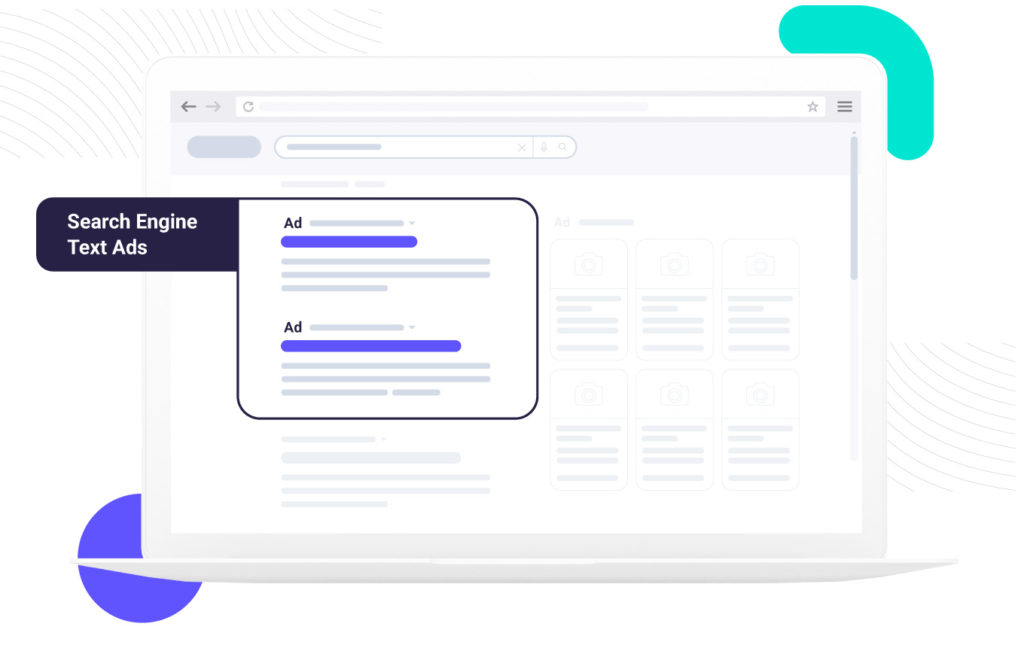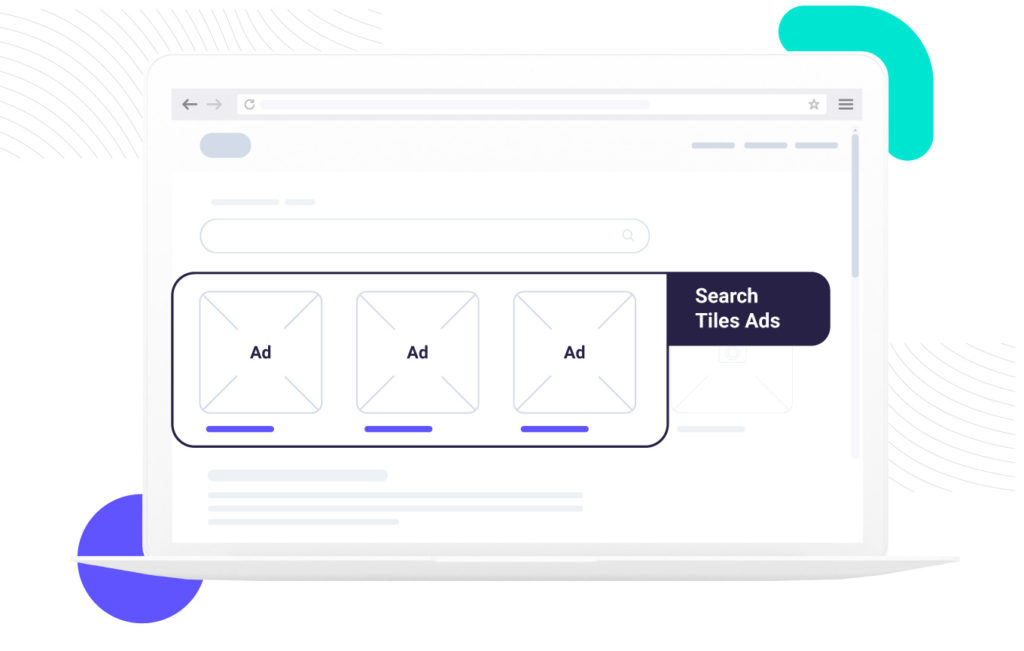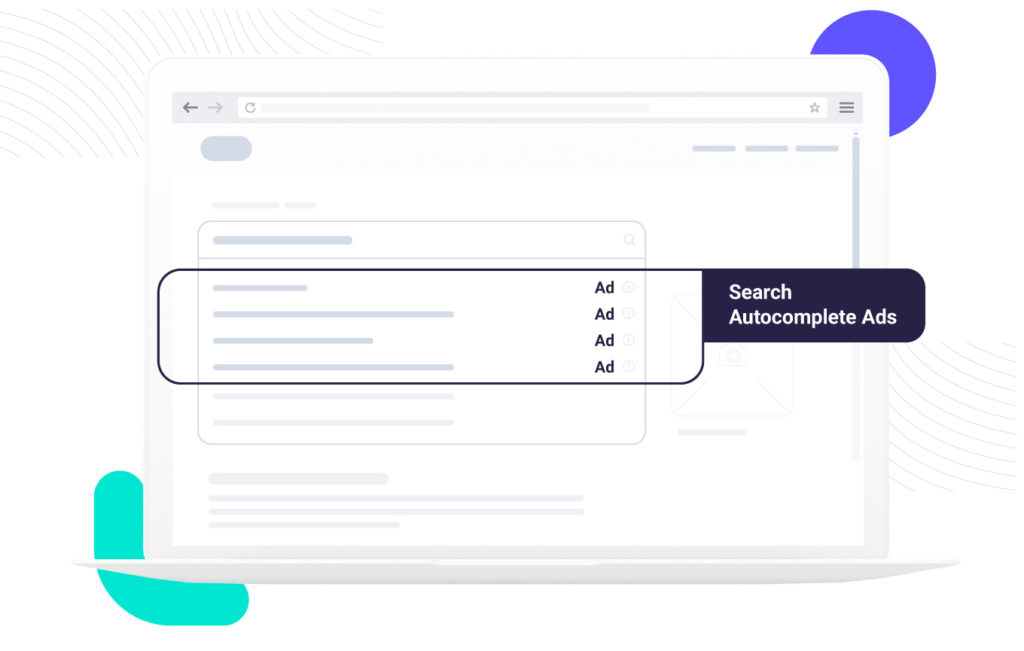Everyone has seen search ads, everyone has used search ads… and almost everyone loves paid search advertising. This is because search advertising is one of the most effective ways for digital marketers and brands to reach their audiences in a precise and efficient way. And at the same time, how search ads work allows users to quickly and effectively find what they are looking for.
But if you think that you know exactly what search ads are, and that everything has been already said about search advertising in 2022, then you might wanna take a second to read through this article.
The programmatic advertising landscape is constantly changing, and so is search advertising.
That’s why below you’ll find a comprehensive overview of the search advertising industry in 2022, as well as industry insights on how to make an informed decision choosing brand-safe and user-friendly ad solutions for your business.
What are Search Ads?
Search ads are part of programmatic ad inventory, displayed specifically on search engine results pages. Although the most common type of search ads is the search text ads, other types of search-based ad formats are also available.
This is because search advertising, also known as SEM (Search Engine Marketing), PPC (Pay-Per-Click), or CPC (Cost-Per-Click) includes various ad formats, such as search text ads, product listing ads, search tiles, or search autocomplete ads. Basically, all kinds of sponsored ads that are shown before organic search results.
Search Engine Text Ads (eg. Google Search Ads, Bing Search Ads, etc.)
Search engine text ads are probably the earliest form of search advertising. They’re displayed right on the first page of the search engine results, just above the organic results. To help users understand that what they see on top of the page is actually sponsored ads, search text ads have this additional information included right next to them. For example, Google search ads are simply marked with a small “AD” tag.

Product Listing Ads (eg. Google Shopping Ads, Facebook Shopping Ads, etc.)
Product listing ads are the second most popular type of search ads. The main difference between product listing ads and regular search engine text ads is that they provide users with key product information on the go. This allows to shorten users’ path to conversion and help them make the purchase decision quicker. This is also why product listing ads are often referred to as shopping ads or dynamic product ads (with Google, Facebook, or Instagram shopping ads being the top players).

Search Tiles Ads (eg. NewProgrammatic, Amazon, Chrome, Mozilla, etc.)
Search tiles, sponsored tiles, shortcut tiles, or query tiles are yet another form of search advertising. Search tiles are in fact static ad placements native to the website/app they’re featured in. This type of search ads differs from text or product listing ads not only in terms of a native and minimalistic look (they would only feature a logo or a simple icon-like image) but also in the way users interact with such ads.
Since search tile ads are straightforward as to what they advertise, people looking for a specific brand or product don’t need to get into too many details rather than instantly click on a sponsored tile and visit the advertised website. Even though search tiles may not seem as common as classic search text or product ads, more and more platforms start to offer search tile solutions as part of their search advertising inventory.

Search Autocomplete Ads (eg. NewProgrammatic, Brave, Opera, etc.)
Search autocomplete ads or search bar ads are, again, yet another type of search advertising available on the market. The most interesting thing about the search autocomplete solution is that it allows marketers to serve ads even before users actually complete their search. This is because just as users start to type in their query into the search bar field, keyword-matching mechanisms serve relevant ads in a form of autocomplete suggestions. To differentiate the sponsored suggestions from organic suggestions, search autocomplete ads are usually marked with an “AD” info next to them — just like classic search engine text ads.

How do Search Ads work?
Although all types of search ads are user-input-dependent, the mechanisms behind each type of search advertising solution differ depending on its type, the platform that serves it, and the technology used by publishers. For example:
- search engine text ads require different content (text information) and ad delivery technology than product listing (visual + key product information) or search tiles ads (minimalistic visual only).
- search engines like Google or Yahoo offer a broader range of advertising inventory (which also means higher competition) rather than a closed app inventory like Facebook or Instagram (offering better targeting options).
- search advertising platforms differ also in terms of their SSP and DSP relations — some need to work with external and/or direct partners to provide the supply, others rely on their internal user base.
- search ads providers offer various ad bidding models, too, that range from static, waterfall to header bidding (including the real-time bidding model).
Depending on the search advertising provider, marketers and brands need to comply with various ad serving, bidding, and integrations mechanisms. Each platform should be able to provide extensive information on how their search inventory is monetized, served, and optimized for the best performance. So, once a given brand or marketer makes a decision on who to work with, they should contact their platform of choice directly and comply with offered formats, or ask for custom monetization solutions if needed.
Where to run Search Ads campaigns? Top Search Ads providers.
The common misconception regarding search advertising is that it is only possible with search engine platforms. And although at the dawn of advertising times search ads may have been limited to platforms like Google or Yahoo, the programmatic reality has changed entirely.
Now, search ads can be run not only with the biggest players in the online advertising space but also with more specific or niche-related platforms allowing for precise user targeting. To help you decide on the best partner for your search ads campaigns, have a look at the following overview of top search advertising platforms
NewProgrammatic
Let us begin with our domestic solution. Why we do it is because, in our humble opinion, NewProgramamtic really is a performance marketing platform that’s designed to capitalize on customers’ intent before they even get to the search results page. Hence, ultimately shortening customers’ path to the searched brand and giving marketers a headstart with their campaigns.
What NewProgrammatic search advertising platform does is help match an already engaged audience with ads featuring relevant content thanks to direct integrations with top publishers in the e-commerce, fashion, beauty, or travel industry (including search engines, apps, marketplaces, etc.) — all done in brand-safe and cookieless way.
NewProgrammatic offers a self-serve platform across our two flagship ad formats — Search Autocomplete and Search Tiles ads (both working on a CPC basis) — as well as custom-made solutions.
You might be surprised to see some of the world’s largest brands rely on NewProgrammatic ad serving technology, but just as the ad-tech world changes, so should brands’ search advertising strategy. Especially given the recent shift towards vertical marketplaces observed among the purchase-ready customers.
Remember you can always book a discovery call with our programmatic experts to see how NewProgrammatic can help your business.

Amazon
Amazon Search Advertising platform is by far one of the most powerful ways to utilize search advertising. Just like with Google ads, whenever users input a keyword into the search bar on the Amazon website, the top results would usually feature sponsored listings marked as ads.
Advertisers choosing to promote their products on Amazon can choose from sponsored product ads, headline search ads, as well as product display ads. Given that Amazon is able to power its advertising algorithms with the actual buying data, the Amazon user targeting system is believed to outdo Google’s AI and provide even better results to both advertisers and users alike.
Interestingly, what NewProgrammatic and Amazon advertising solutions have in common is that both operate within closed marketplace ecosystems — Amazon ads being native to its own marketplace platform, and NewProgrammatic enabling search advertising for various types of marketplace platforms, e.g. BNPL apps, coupon sites, etc.
Google Search Ads
Google Search Ads platform is the largest search ad provider offering a number of ad formats across all types — search text ads, shopping ads, banner ads, video, etc. Which doesn’t come as a surprise given that Google is the largest search engine in the world, too, occupying more than 90% of the market.
But being the biggest search ads provider also means that the competition among Google advertisers is just as high as the volumes of available traffic. That’s why advertisers need to be either very careful with their budgets running such broad campaigns, or need to be really skilled at precise campaign targeting among google search results. Especially given the Google Ad Rank mechanism and the second-price bidding system that makes the competition even tighter, and Google a bit picky when it comes to ad exposure.
Apple Search Ads
Apple Search Ads, though a little different from other search ad solutions listed here, are undeniably an important part of the search advertising landscape. Apple search ads focus on mobile app advertising only, helping app owners reach highly interested and well-targeted audiences. Additionally, Apple App Store is reported to outperform Google Play in generated revenue even though Google Play may be generating double the downloads count.
This proves that a limited reach, yet targeted at a higher-income and brand-loyal segment of the audience may actually turn more profitable even at a much smaller scale.
Microsoft Bing Ads
Microsoft Bing Ads, previously known as Bing Ads, work on a similar basis to already mentioned Google Search Ads. Both ad formats work on a second price auction system and are powered by keyword input based on user searches in the Bing Microsoft browser.
What’s important to note is that although Google holds the majority of the market share, Microsoft Bing Ads amount to 12 billion monthly searches globally. Such results prove that even a much smaller audience (in comparison to Google’s 90% market share) can still feature significant numbers of potential users. According to Microsoft Advertising Platform itself, importing your Google Ads campaign to Microsoft Ads allows you to reach up to 44 million US desktop users that Google won’t reach.
Microsoft Bing Ads inventory includes text ads, app install ads, dynamic search ads, product ads.
Yahoo Ads
Yahoo ads cannot be discussed here without mentioning the Verizon Media Group cluster consisting of the Yahoo Gemini platform, as well as other Verizon properties like AOL, the Huffington Post, TechCrunch, and many others. Another point to note is the arrangement between the Verizon Group and Microsoft Bing ads, stating that the extended partnership will make all Yahoo search inventory available through the Bing Ads platform, while Bing Ads will continue to serve all AOL search inventory, according to the Search Engine Land article.
What seems like an interesting partnership in terms of the search advertising industry is naturally a strategic move in cutting down on any share of Yahoo search inventory that Google may have served prior to the agreement.
The Yahoo Gemini platform delivers various search ad formats across text, image, video as well as app environments, and thanks to joint partnerships is able to serve billions of ad impressions to users around the world.
Yandex Ads
Yandex Ads are offered by one of the largest ad-tech companies, and one of the main search engines in Russia, which is often considered to be Google’s counterpart in that region. So, if a brand wants to tap into the Russian audience segment, then Yandex ads become a natural choice.
Offering a number of PPC ad formats (banner ads, video ads, ads for mobile apps, dynamic ads, text and image ads, and naturally – search ads) across various devices (website, mobile apps, smart TV, and video), Yandex manages to attract billions of monthly users securing its spot as one of the top search advertising platforms in Russia.
And even though the American tech giant may not like it, Yandex keeps growing as a company working on developing its own technological solutions to help performance marketers reach their goals and attract an even bigger share of the Russian audience.
Baidu
Baidu Advertising is yet another example of how a region native advertising platform/search engine takes priority over the global solution.
That’s because the Baidu search engine, and hence its search advertising platform, is a Chinese counterpart to Google — just like the Yandex Ads in Russia. Only looking at the Chinese search engine market share split, Baidu holds over 76% of it (leaving Google far behind) though it is, in fact, limited to the China region alone.
The way the Baidu PPC search advertising network works doesn’t differ much from Google, Yahoo or Yandex solutions, offering extensive targeting and tracking options for all the available ad formats. These ad formats include Baidu search, display, in-feed, and brand ads.
DuckDuckGo
DuckDuckGo Search Engine is a privacy-focused search engine solution created in response to the growing concerns regarding how user privacy is handled by global tech giants like Google or Facebook. Since its inception in 2008, the DuckDuckGo search engine kept growing its privacy-concerned audience and hence reached over 90 million daily queries in October 2021, placing itself as one of the major competitors to Google on the US market.
It’s important to note, though, that DuckDuckGo advertising operates via the Microsoft Advertising platform, just like the Bing or Yahoo ads. Nevertheless, DuckDuckGo protects user privacy by withholding any user-specific information. Its advertising solutions are based on keyword matching alone, which provides intent-based ads in a user-friendly form — similarly to NewProgrammatic.
YouTube
YouTube Advertising Platform, though coming last in this article’s overview, should not go unnoticed — and that includes all the markets that don’t specialize in video marketing, too.
YouTube is the second biggest online platform in the world, with over 2 billion logged-in visitors monthly. Also, becoming part of the Alphabet Inc. parent company together with Google, regular Google text ads have also been enabled on YouTube search results based on user keyword input on mobile devices. Apart from Google text ads being visible among the video search results, programmatic video advertising offers yet another stream of profit for performance marketers running Youtube campaigns.
Interestingly, although both platforms — Google and YouTube — fall under the same company umbrella, and both are in fact search engines, there’s a drastic difference between how videos are searched (and the returned results) on both platforms. Also, YouTube is predicted to outdo its sister company (and many others) soon given the increasing shift in user behavior and online trends towards video content, as well as moving away from the broad search engines towards vertical ones. Brand marketers — keep watching.
Conclusions
The advertising industry has come a long way since its humble beginnings in the print form to the AI-powered global ad-tech ecosystem it is today. And just as the world has changed, so have consumer trends and needs, which both brands and performance marketers need to accommodate. That’s why staying on top of industry trends while ensuring that user-privacy and safety measures are put in place is essential for any marketing strategy to pass the test.
In 2022, more than ever, time and health are more precious than money. This also means that brands wanting to engage in quality relationships with their customers and help them go through the buying process as seamlessly as possible need to take that into account and help improve the process even further. People want to find things fast, and they want the findings to be accurate and relevant.
That’s why the broad search engine advertising may soon lose to ad solutions that deliver the desired content, only where people actually go look for it.




